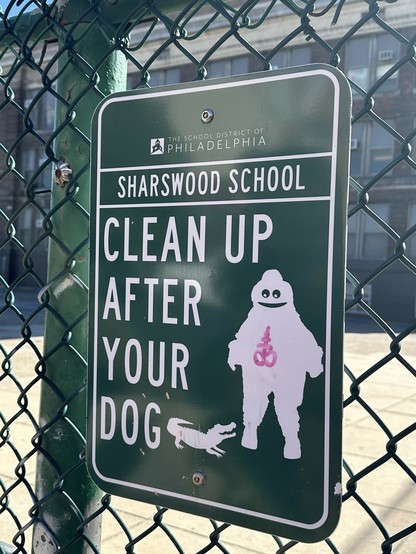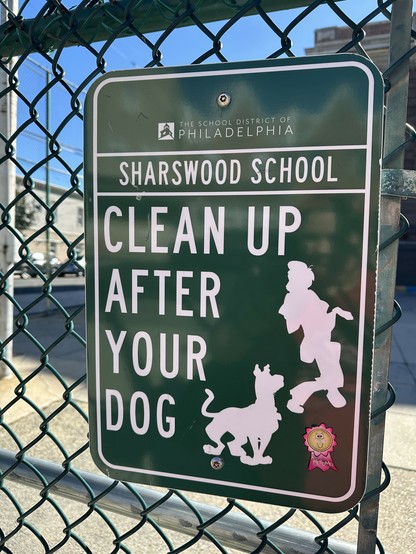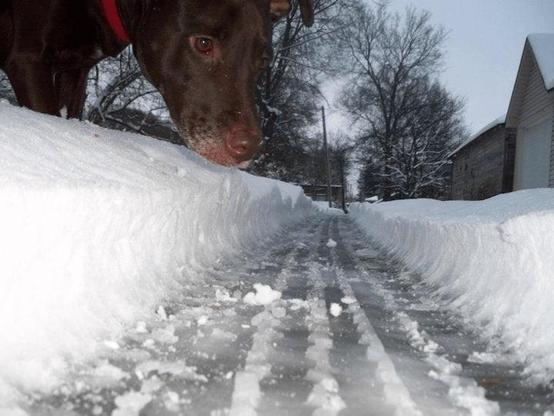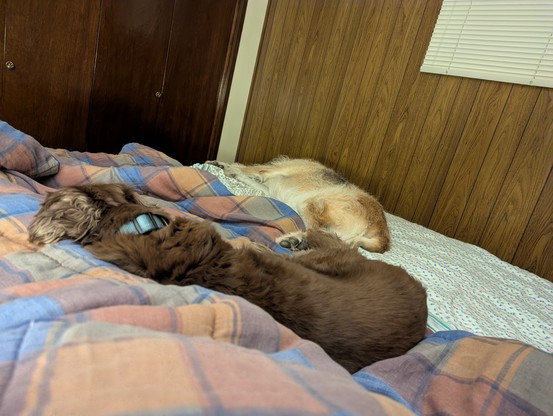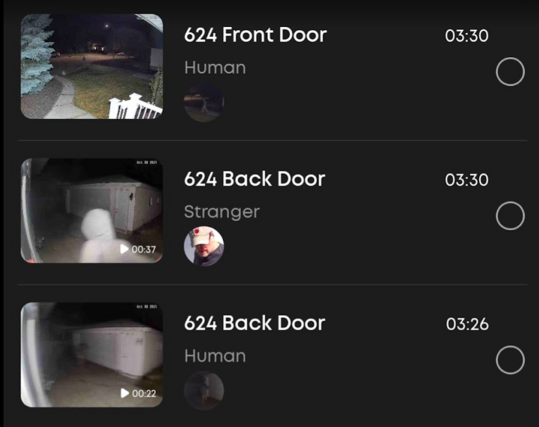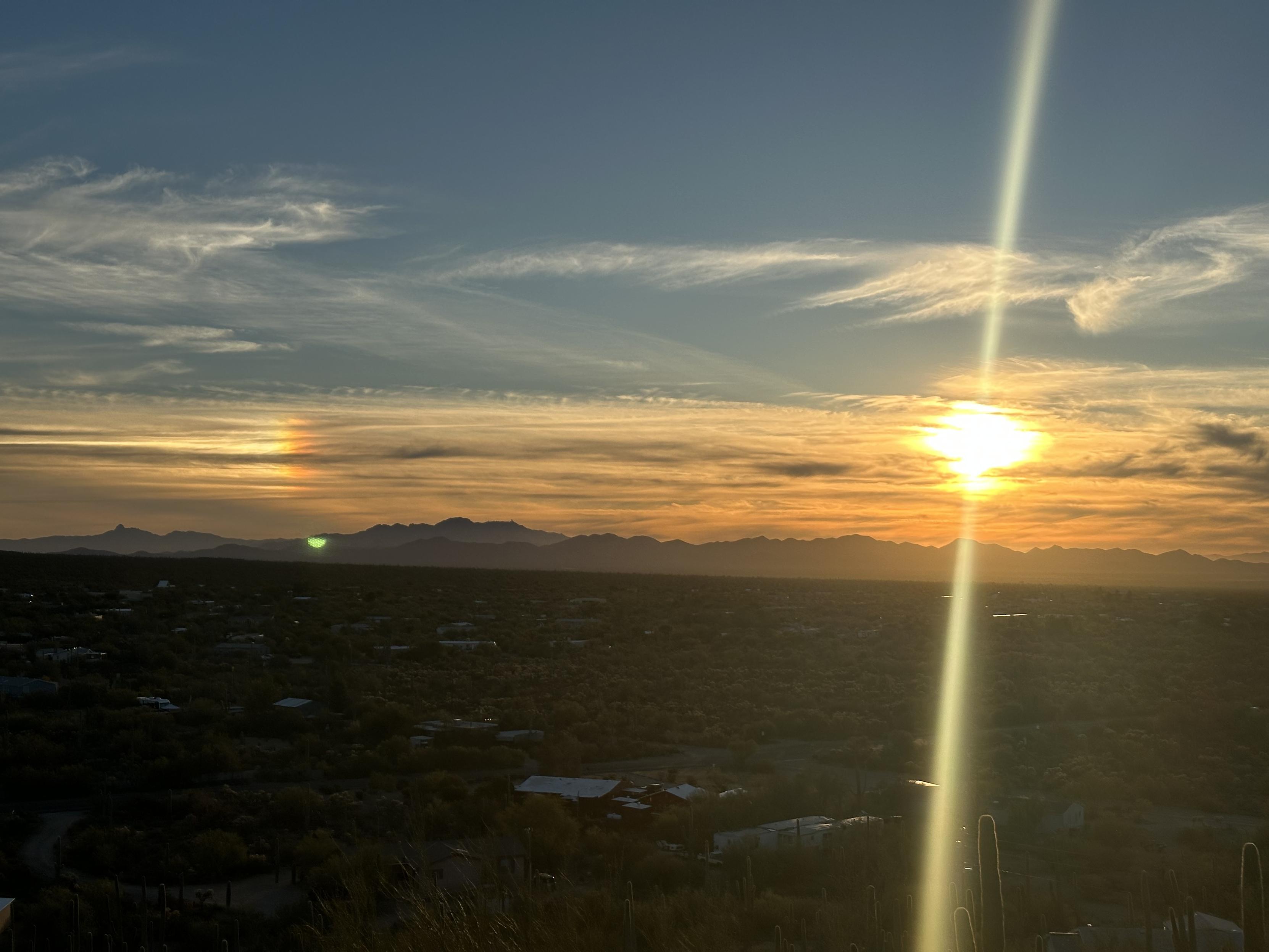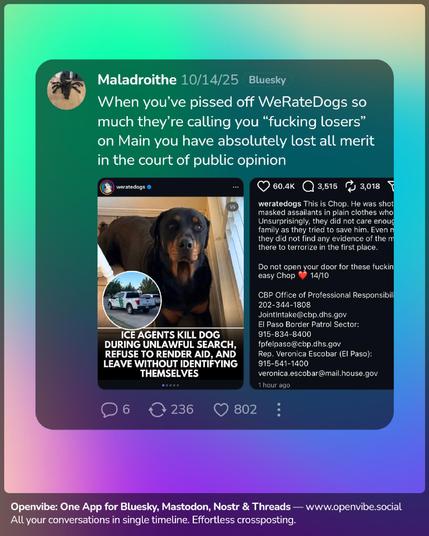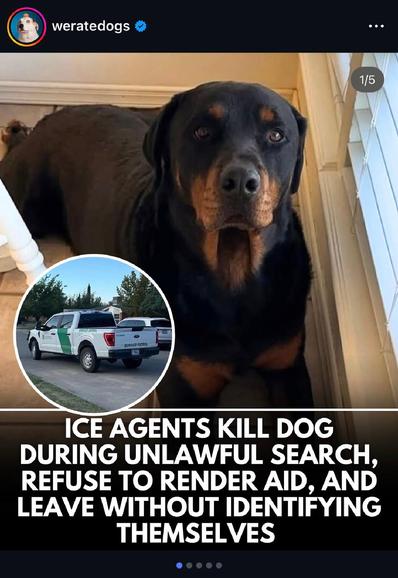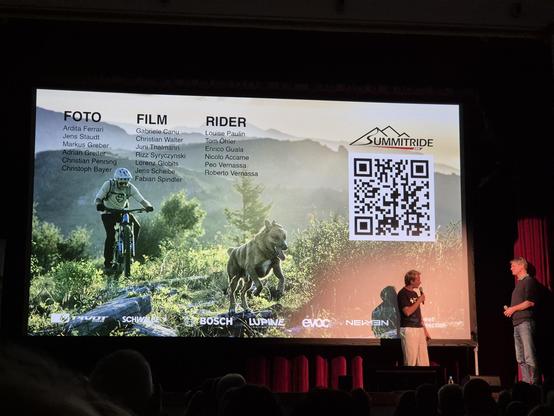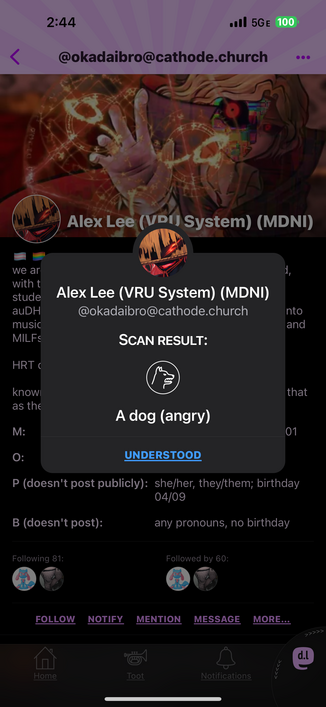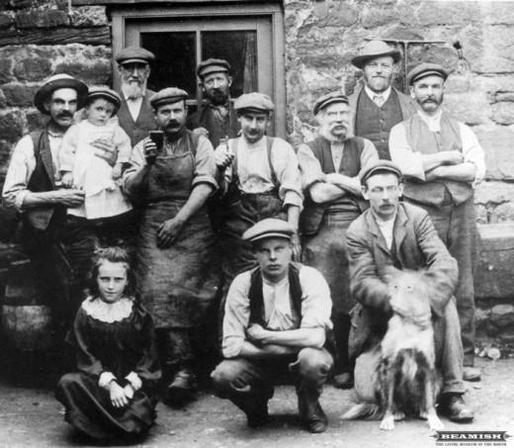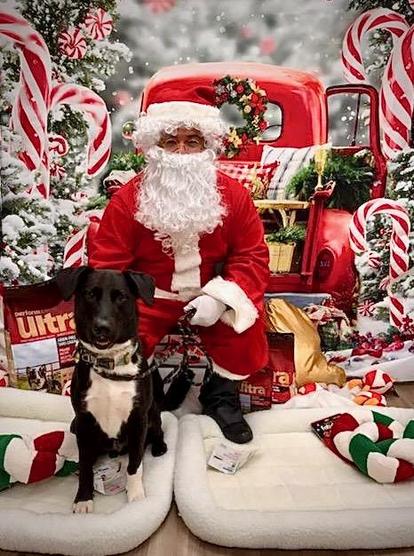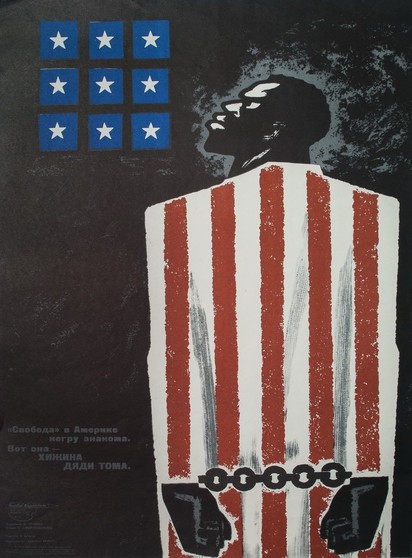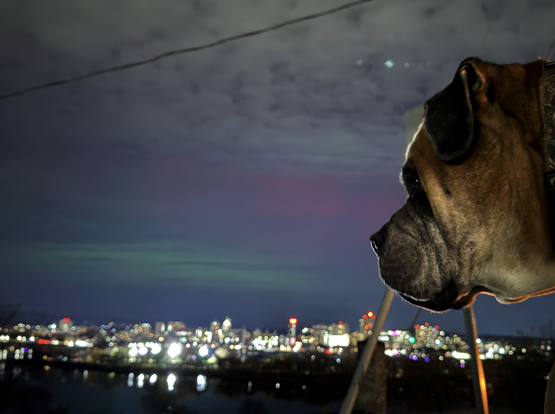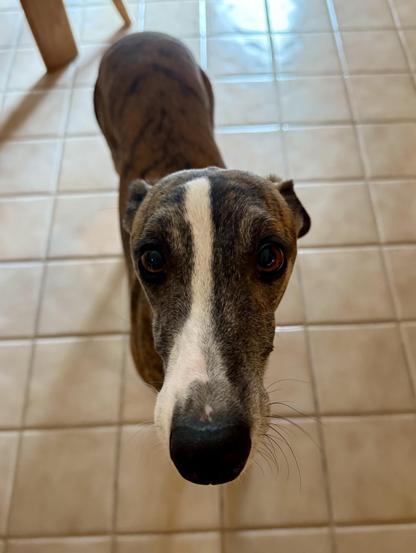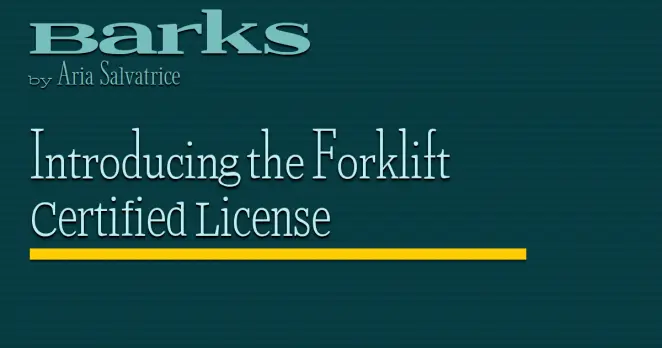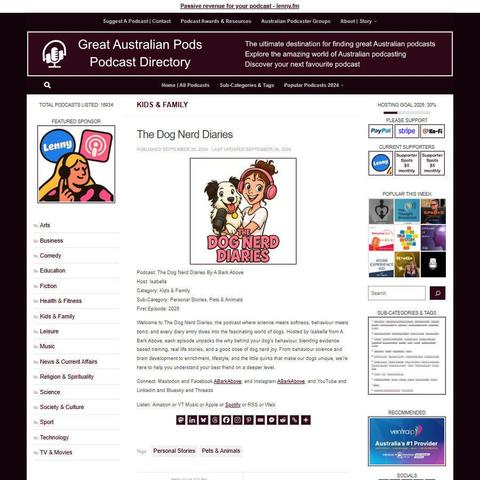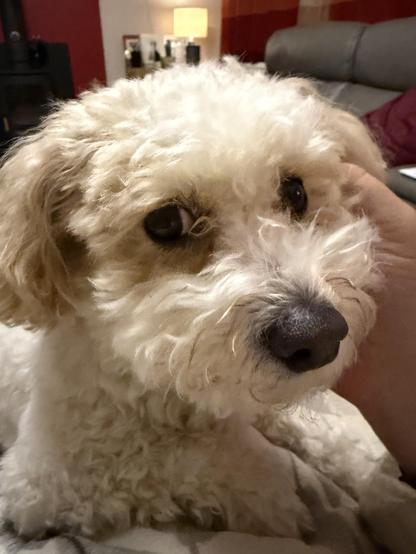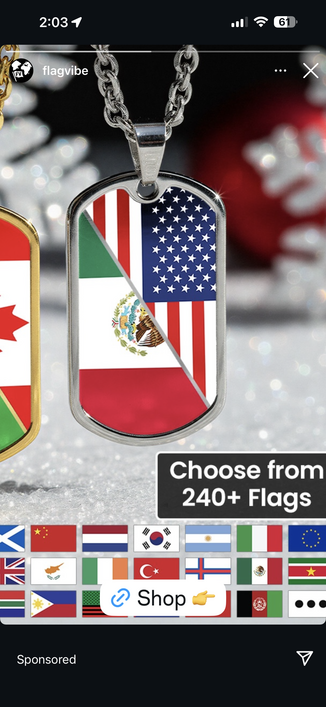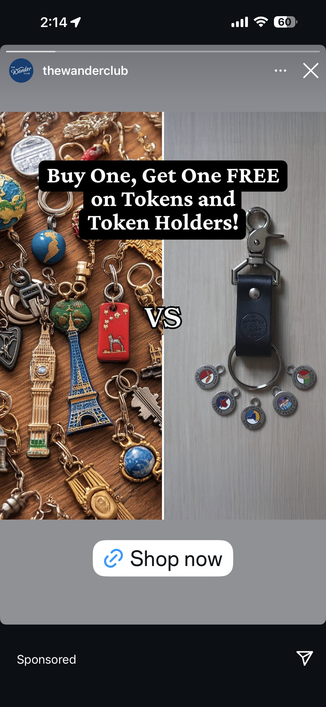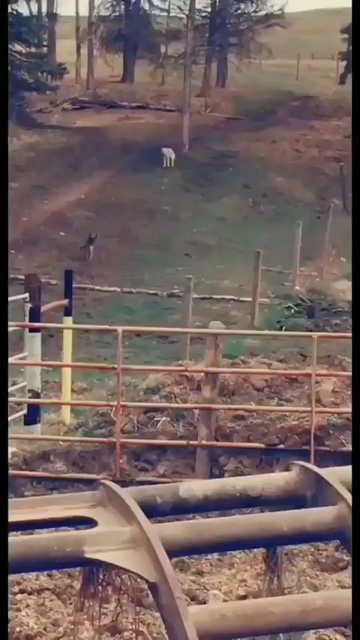2025-10-18 15:25:05
2025-10-18 15:25:05
2025-10-18 15:00:12
petster: Pet owner social networks (2016)
A network of friendships among users on catster.com and dogster.com. Node represents a user, and edge exists if two users self-identify as friends on either website. The dogster/catster network also contains family links between dog and dog, cat and cat, as well as dog and cat.
This network has 623766 nodes and 15699276 edges.
Tags: Social, Online, Unweighted
2025-12-17 01:23:29
If you have a dog is there a specific scent your dog hates or avoids?
2025-11-17 17:44:29
«AI scrapers request commented scripts»
That seems like an interesting additional vector for algorithmic sabotage!
https://cryptography.dog/blog/AI-scrapers-request-commented-scripts/
2025-11-16 19:10:58
PSA about food labeling in the US
We have a gluten detection service dog because many things that should be gluten free/say they’re gluten free are not actually gluten free.
Stuff gets contaminated when growing (e.g. next to wheat field), by shared equipment, in factories, from packaging, during transport and in-store.
Every US consumer should know:
1. The list of ingredients on food isn't exhaustive
2. Allergen labeling:
a) limited to just some allergens
b) manufacturers don't actually have to test
c) "certified" foods are tested—but not continuously
d) testing only works with enough contamination
Some certifications may require batch-testing, but usually they don't.
A "certified gluten free" product may e.g. contain oats which sometimes are contaminated with gluten—but as not every batch is tested it's impossible to know unless you test yourself (hence the service dog).
Even if the product is properly batch-tested, you might get a part of the product that has the allergen in it, whereas the tested part didn't.
Or the threshold was too low (our dog can detect gluten better than any available lab testing equipment; yes, dogs are amazing).
Food products also contain ingredients that do not have to be included on the label when they're "incidental" (included in an another ingredient) or if they're considered part of the manufacturing process but not of the final product (e.g. various coatings on factory equipment).
Don't need to list flavors or specific spices either. ¯\_(ツ)_/¯
As for allergens, only those responsible for ~90% of food allergies* have to be specifically declared, and they're not tested for as it's simply based on the ingredients list.
Good luck if you have other allergies.
*milk, egg, egg, fish, Crustacean shellfish, tree nuts, wheat, peanuts, soybeans
2025-10-16 19:19:06
Today I learned about Kukur Tihar, a festival day in Nepal where dogs are honored for their loyalty and honesty.
This year it falls on October 19 - I don't have a dog, but I think it is the kind of festival we should adopt.
Be kind to all dogs, and especially on Kukur Tihar!
https://himalayan-masters.co…
2025-11-17 20:00:11
petster: Pet owner social networks (2016)
A network of friendships among users on catster.com and dogster.com. Node represents a user, and edge exists if two users self-identify as friends on either website. The dogster/catster network also contains family links between dog and dog, cat and cat, as well as dog and cat.
This network has 623766 nodes and 15699276 edges.
Tags: Social, Online, Unweighted
2025-10-18 15:40:08
Alexandria, VA, is one of the most dog-friendly cities in the country. Of course there will be pups at our demonstrations and protests.
#NoKings
2025-10-16 18:37:06
2025-11-16 13:03:26
Dodger's pitcher Yamamoto's adopted dog protects his house from an attempted break in. That's a good boy.
✅ Yoshinobu Yamamoto’s dog helped scare off intruders at LA home – NBC Los Angeles
https://www.nbclosangeles.com/news/sports/
2025-12-16 05:26:31
2025-12-17 08:58:48
If you reintroduce an apex predator into a naïve ecosystem that has further evolved without it and then look all surprised_pikachu.gif when it acts like an apex predator, you might be incredibly stupid https://www.telegraph.co.uk/world-news/202
2025-10-18 14:49:19
2025-11-17 01:34:09
ACT and their Atlas Network operative leader, David Seymour, are the tail wagging the National ACT NZF coalition. Luxon conceded pretty much everything ACT required from National. Perhaps he is more right wing than National is, but also wanted the reins of power, so he was happy for ACT to lead it... but I wonder how National supporters feel about our domestic policy being set by an overseas oligarch-funded 'tail' wagging the National dog?
2025-10-18 13:14:58
So - babysitting the sister's dog while they're out of town checking out universities for the nephews. Finally got these two to get along and they crashed for the night.
Well - at 03:20 this morning - there was a cacophony in the back yard, and these two idiots ran up there and started barking. As it turns out - there was a young man wearing a hoodie and nothing else - yelling and cursing, eventually throwing around the lawn chairs that were in the back yard.
He tried a…
2025-12-07 12:56:08
Tim Dowling: our dog is bottom of the class at dog school https://www.theguardian.com/lifeandstyle/2025/dec/06/tim-dowling-our-disobedient-dog-is-failing-out-of-dog-school?CMP=Share_iOSApp_Other
2025-10-13 15:46:35
Our wonderful dog, Izzy (the brown and white dog) was taken to a shelter in March 2020 with four very young puppies. One, Star (the black and white dog), lives nearby and he and his human often stop by on their walks. Even after 5 1/2 years, Izzy gets more excited to see Star than any other dog or person, except maybe me. #MonDog
2025-10-15 03:00:01
Many enraged psychiatrists are inciting a weary butcher. The butcher is
weary and tired because he has cut meat and steak and lamb for hours and
weeks. He does not desire to chant about anything with raving psychiatrists,
but he sings about his gingivectomist, he dreams about a single cosmologist,
he thinks about his dog. The dog is named Herbert.
-- Racter, "The Policeman's Beard is Half-Constructed"
2025-12-14 00:00:21
Pretty intense sun dog
What's a sun dog? https://en.wikipedia.org/wiki/Sun_dog
2025-10-13 12:45:33
The Left's most fervent, and most wrong, attack dog: NY's Rep. Dan Goldman (Jonathan Turley/New York Post)
https://nypost.com/2025/10/12/opinion/the-lefts-most-fervent-and-most-wrong-attack-dog-nys-rep-dan-goldman/
http://www.memeorandum.com/251013/p23#a251013p23
2025-10-17 23:56:39
ICE killed a dog without cause or warrant.
"When you’ve pissed off #WeRateDogs so much they’re calling you “fucking losers” on Main you have absolutely lost all merit in the court of public opinion" - Maladroithe
Original post:
2025-11-16 16:17:32
My dog, Stanley is pretty smart.
He has "speech" buttons that he can press to "say" words (it plays an audio recording of a word like “outside" or "water”).
He'll press the "food" button before we'll feed him dinner, and he presses "outside" most mornings as apart of his routine.
But he has absolutely no idea what these buttons are actually *saying*. He just knows that he gets food when he presses that one. He's …
2025-10-18 20:34:38
2025-09-26 09:07:07
TIL my beloved `dog` DNS client has been unmaintained for a few years and there's a community-based fork called `doge` (the name was chosen before it became a synonym for chainsaw politics): https://dog.ramfield.net
2025-11-16 19:56:05
We just attended another travel show. This time: #mountainbiking in #ligurien from Harald Philipp.
The visuals were pretty cool. And riding such trails UPHILL was pretty impressive, too. Definitely only doable with an ebike.
2025-12-13 13:32:44
🇺🇦 #NowPlaying on KEXP's #VarietyMix
Dr. Dog:
🎵 Where'd All the Time Go?
#DrDog
https://iloveconsumingplastic.bandcamp.com/track/the-world-is-mine-dr-dog-whered-all-the-time-go-remix
https://open.spotify.com/track/0UV5zxRMz6AO4ZwUOZNIKI
2025-11-04 22:21:29
Tom Brady says dog Junie is a clone of family's previous dog https://www.nytimes.com/athletic/6777780/2025/11/04/tom-brady-dog-junie-clone/
2025-10-17 06:49:57
2025-10-05 06:56:15
Stray Dog Saved From ‘Death Row’ Turns into Brilliant Detective, Sniffing out Lost Animals https://www.goodnewsnetwork.org/stray-dog-saved-from-death-row-turns-into-brilliant-detective-sniffing-out-lost-animals/
2025-10-16 05:05:13
🇺🇦 Auf radioeins läuft...
Fat Dog:
🎵 Peace Song
#NowPlaying #FatDog
https://fatdogfatdogfatdog.bandcamp.com/album/peace-song
https://open.spotify.com/track/2FPcTfECQrZviBAarAHv1f
2025-10-12 16:22:19
#TimeTraveler has an iPhone?
2025-11-14 21:03:38
@… @… unbounded fetch is a feature to dog 😅
2025-10-15 18:41:39
NYC uses the term "curb your dog" on a bunch of signs. The term has never made sense to me. Where did it come from and what is it supposed to mean now? Horses were the root?
2025-11-15 15:46:26
While Govt workers have been laid off by the thousands, pals of Kristi Noem gettin' paid off... The opaque Delaware corp PR firm of her pals that put her on a pony to rant against "illegal immigrants" during the govt shutdown just made $220m tax dollars...
https://www.propubli…
2025-11-05 17:20:29
Tom Brady reveals his dog is a clone of his late pet https://www.reviewjournal.com/news/nation-and-world/tom-brady-reveals-his-dog-is-a-clone-of-his-late-pet-3533271/
2025-10-17 02:57:27
🇺🇦 #NowPlaying on #BBC6Music's #6Musics90sForever
Belle and Sebastian:
🎵 Dog on Wheels
#BelleandSebastian
https://lazybonkrecords.bandcamp.com/track/dog-on-wheels
https://open.spotify.com/track/6vRgTAzh9DRvp1MFknMe6Z
2025-10-26 07:33:09
Reagan's "Welfare Queen" rhetoric was a dog whistle. The whole "southern strategy" was full of dog whistles. Every time Republicans talked about gay marriage as a "states rights" issue, those were dog whistles. Naming a government agency "the Department of Homeland Security" was a dog whistle. Trump's speeches leading up to his first term were full of dog whistles.
Nazis have total control of all branches of government. They've cut off funding to all but the most oppressive elements of the government. There are concentration camps, both in client states (CECOT, among others) and in the US (Alligator Auschwitz, among others). They're actively carrying out ethnic cleansing.
When DHS puts out some Nazi shit, it's not a dog whistle. It's a vuvuzela. They're not trying to signal their intent without any of the "normies" noticing. They actively doing what they wanted to do. It's not a signal because there's nothing to signal. It's a celebration.
#USPol
2025-12-14 04:35:30
2025-10-04 00:35:04
Randomly reminded of the time as a kid that my brother invented a dish known as the "pizza hot dog" with his toy food. It consisted of a slice of pizza served in a hot dog roll.
Then decided to be a pizza hot dog vendor as his Halloween costume that year.
2025-11-03 15:26:34
So much happened over the weekend, so check out today's Metacurity for the most critical infosec developments you might have missed, including
--Hackers who stole trove of sensitive UPenn data derides 'dog**** elitist institution',
--LLM giants are trying to stop indirect prompt injection attacks,
--Oz government warns of Cisco IOS XE flaws,
--Polish authorities probe cyberattack on online loan platform,
--Chinese President Xi Jinping joked about smar…
2025-12-15 00:20:48
Did your dog die of kidney failure?
▶️ Toxic dog treats: What's killing so many dogs? (CBC Marketplace)
#dogs
2025-12-09 14:33:53
Baghed may be breaking up, but from that has spawned new Philly band Dasgüt, and this is their first single. Major Baghed vibes. Dig it.
#NowPlaying
2025-12-07 00:10:16
Democratic senator Patty Murray of Washington state has condemned the Trump administration
after she alleged that an Immigration and Customs Enforcement (ICE) “attack dog” mauled one of her constituents.
Senator Murray said Wilmer Toledo-Martinez suffered “horrific” injuries while ICE agents detained him in November.
“An ICE agent lured Wilmer out of his home under false pretenses,
posing as a construction worker who claimed to have hit Wilmer’s car and needed him to s…
2025-10-14 16:15:44
2025-11-12 16:37:52
Release by House Oversight Committee Democrats today include emails between Epstein & Ghislane re: Trump #uspol #EpsteinFiles
Epstein to Maxwell Apr 2, 2011
“i want you to realize that that dog that hasn’t barked is trump..[VICTIM] spent hours at my house with him ,, he has never o…
2025-11-14 15:55:36
Internet goes wild over the dogs of the Chernobyl Exclusion Zone turning blue.
But it's absolutely not anything to do with radiation and is probably just them breaking into a portable toilet.
https://www.snopes.com/fact-check/blue-dogs-chernobyl/
2025-11-12 14:01:02
Samson watching the northern lights in Pennsylvania. #dogsofmastodon
2025-10-11 09:38:00
Be careful out there... It's #Caturday
2025-11-04 20:34:24
2025-11-01 03:58:47
Please enjoy this random golden retriever dressed up as a chef that we saw tonight while trick-or-treating. #DogsOfMastodon
2025-12-11 00:24:38
🇺🇦 #NowPlaying on KEXP's #DriveTime
The Kills:
🎵 Heart of a Dog
#TheKills
https://volcanoclub.bandcamp.com/track/cover-the-kills-heart-of-a-dog
https://open.spotify.com/track/1MweULEzWWg5WTlBWMZosS
2025-11-13 15:41:20
This just made me laugh
https://scp-wiki.wikidot.com/the-foundation-fails-to-pass-a-budget
Partly because I have been making friends with the local Corvid population here and now when I walk the dog past the spot where I feed them they flock to me and gape…
2025-12-05 04:07:55
The Turkey Trot was a dog-positive and even zany event this year with runners coming and going
#photo #photography #running
2025-10-05 23:05:16
Appreciate the sentiment, but ewww:
Woman caught on camera smearing poop on Trump-themed Cybertruck | The Independent
https://www.the-independent.com/news/world/americas/crime/dog-poop-trump-tesla-cybertruck-b2839780.html
2025-11-29 19:38:21
I met a new #dog yesterday named Tucker. He’s a bit shy but decided to risk it and say hello in exchange for pats. #dogsofmastodon
2025-09-19 10:11:49
"The Free Software Foundation has been sliding into irrelevance more and more by entirely failing to address its big Creepy Uncle problem. Open-Source has turned into a form of unpaid internship to be hired to make shitty apps that bring more surveillance and ads to our world."
https://aria.dog/barks/forklift…
2025-10-14 20:00:01
Q: "What is the burning question on the mind of every dyslexic
existentialist?"
A: "Is there a dog?"
2025-09-26 03:42:43
The Dog Nerd Diaries By A Bark Above
Great Australian Pods Podcast Directory: #GreatAusPods
2025-11-04 17:11:17
Disappointment as local lion turns out to be a mutt (not surprise, though)
https://www.irishexaminer.com/news/munster/arid-41736558.html
2025-09-23 23:25:54
The FCC's Brendan Carr says "local TV stations" "stood up" to a national programmer by preempting Kimmel and that "we need to keep empowering local TV stations" (Farrah Tomazin/The Daily Beast)
https://www.thedailybeast.com/trumps-tv-at
2025-12-03 18:02:25
2025-11-12 09:30:49
5 years ago we got this gorgeous little puppy who has turned into the most wonderful and funny dog! Happy gotcha day Miya!!! #dogsofmastodon
2025-11-10 01:14:08
The cheese in the stuffed #sourdough pretzel dogs was inside the dough, not the dog, btw
2025-10-09 20:41:44
Remember the stray dog that we adopted a few weeks ago, after park rangers cared for her in a natural reserve but without them being able to find anyone who would claim her as a lost/runaway dog?
Today we took her to be spayed. It was a short surgery, as the vet quickly noticed that she was already spayed. Seems she's at least a year older than initially estimated – which means that it's likely that someone abandoned the poor thing in the reserve.
#dogsofmastodon
2025-10-11 04:42:57
2025-10-05 03:03:25
@… I never heard of TERF, seeking the word in connection with Mastodon found this (top match):
<https://aria.dog/barks/mastodon-trust-
2025-12-11 23:03:40
🇺🇦 #NowPlaying on KEXP's #AfternoonShow
Big Mama Thornton:
🎵 Hound Dog
#BigMamaThornton
https://bigmamathornton.bandcamp.com/track/hound-dog
https://open.spotify.com/track/5Oc0vLGWdEWeCqIU8zyELt
2025-11-12 16:37:52
Release by House Oversight Committee Democrats today include emails between Epstein & Ghislane re: Trump #uspol #EpsteinFiles
Epstein to Maxwell Apr 2, 2011
“i want you to realize that that dog that hasn’t barked is trump..[VICTIM] spent hours at my house with him ,, he has never o…
2025-12-15 08:21:20
2025-12-13 17:10:17
Rule #1 of movies:
"Never kill the dog."
Corellary:
"...unless it underpins the main character's motivation. See '#JOHNWICK'."
Dunno how many times I've been in a theater & when the dog is in jeopardy, the people sitting next to me whisper, 'oh no no no... don't you dare f'ing do it..."
2025-12-05 19:13:17
The dog at work saw the tennis ball I have to sit on for my PT an now my like is ruined and I may need to work from home or work nights when the dog isn't there or just find a new job. 😩
2025-11-05 22:00:11
petster: Pet owner social networks (2016)
A network of friendships among users on catster.com and dogster.com. Node represents a user, and edge exists if two users self-identify as friends on either website. The dogster/catster network also contains family links between dog and dog, cat and cat, as well as dog and cat.
This network has 623766 nodes and 15699276 edges.
Tags: Social, Online, Unweighted
2025-11-09 09:41:21
George "Gilti Sam" 21 September 2017 – 7 November 2025
George's humans wrote to let me know that they had to let him go on Friday. His epilepsy got worse and after a few days of specialist care they made the difficult decision.
All dogs are their own unique people but I can honestly say that George was the most memorable dog I've ever known. For almost 3 years he was my most frequent dog sitting client.
2025-11-17 20:31:01
🇺🇦 Auf radioeins läuft...
Fat Dog:
🎵 King Of The Slugs
#NowPlaying #FatDog
#radioeins gespielten Titel als #Spotify Playliste: https://open.spotify.com/playlist/3hdH98B6uyXilhcWxCA6nv
2025-12-04 14:58:39
Taking the dog outside to use the bathroom, I found a pile of dog poop frozen to the concrete.
2025-12-11 11:41:15
I just created a new acronym for net surfers: LRL, Laughing Really Loud. Example: That dog sure snorted that pasta! LRL! Do u like my acronym
2025-10-05 15:06:41
🇺🇦 #NowPlaying on #BBC6Music
Getdown Services:
🎵 Dog Dribble
#GetdownServices
https://getdownservices.bandcamp.com/track/dog-dribble-2
https://open.spotify.com/track/6skfouZ5bFFU3vxWaBla3B
2025-11-09 06:37:17
🇺🇦 #NowPlaying on KEXP's #SonicReducer
Cosey Mueller:
🎵 Dog Salon
#CoseyMueller
https://coseymueller.bandcamp.com/track/dog-salon
https://open.spotify.com/track/7GuJsckMchpB0uyGkf6rY6
2025-11-29 00:56:49
Shirtless Ben Johnson gets Chicago fans free hot dogs following Bears win vs. Eagles https://www.nytimes.com/athletic/6846119/2025/11/28/ben-johnson-shirt-off-bears-chicago-hot-dog/
2025-10-03 15:40:20
Was Flash from "The Dukes of Hazzard" non-binary?
"Initially referred to as a boy, Flash is later regularly a girl (despite an occasional male reference afterwards)."
https://dukesofhazzard.fandom.com/wiki/Flash
2025-12-09 15:41:37
🇺🇦 #NowPlaying on KEXP's #MorningShow
Temple of the Dog:
🎵 Say Hello 2 Heaven
#TempleoftheDog
https://timmaeder.bandcamp.com/track/say-hello-to-heaven-temple-of-the-dog
https://open.spotify.com/track/4L2S9GbwEgwfSbHjTCvNQX
2025-10-08 09:48:32
2025-12-17 21:04:54
2025-12-03 12:33:42
Good morning, Fediverse!
#Dog #DogsOfMastodon
2025-11-09 06:41:12
🇺🇦 #NowPlaying on KEXP's #SonicReducer
Jerks:
🎵 Get Your Woofing Dog Off Me
#Jerks
https://xylitolband.bandcamp.com/track/get-your-woofin-dog-off-me-the-jerks
https://open.spotify.com/track/3ceIzwX2OoCMrteduEXmsg
2025-09-26 07:00:13
petster: Pet owner social networks (2016)
A network of friendships among users on catster.com and dogster.com. Node represents a user, and edge exists if two users self-identify as friends on either website. The dogster/catster network also contains family links between dog and dog, cat and cat, as well as dog and cat.
This network has 623766 nodes and 15699276 edges.
Tags: Social, Online, Unweighted
2025-12-13 02:49:17
I've adopted 3 senior dogs. After being brought home, something clicks 2-3 wks in: They smile & are genuinely SO appreciative.
There's absolutely no better feeling.
▶️ This Unwanted Senior Dog's Reaction to Finally Being Adopted Will Melt Your Heart
https://youtube.com/watch?v=1I…
2025-11-18 20:58:06
🇺🇦 #NowPlaying on #BBC6Music's #NewMusicFix
DJ Subaru:
🎵 Dog (feat. Chopper Johnson)
#DJSubaru
https://open.spotify.com/track/0zJigFPQL9x6i5meeJh801
2025-12-12 17:53:46
🇺🇦 #NowPlaying on KEXP's #MorningShow
R.E.M.:
🎵 Crazy
#REM
https://djadog.bandcamp.com/track/9-c-r-e-a-m-wu-tang-a-dog-3beat-up-re-fix
2025-10-25 21:00:11
petster: Pet owner social networks (2016)
A network of friendships among users on catster.com and dogster.com. Node represents a user, and edge exists if two users self-identify as friends on either website. The dogster/catster network also contains family links between dog and dog, cat and cat, as well as dog and cat.
This network has 623766 nodes and 15699276 edges.
Tags: Social, Online, Unweighted
2025-12-06 16:48:09
Attention dog lovers: The audiobook for "Arthur" is available for the next 2 days for FREE for Audible members!
▶️ "Arthur: The Dog Who Crossed a Jungle to Find a Home" by Mikael Lindnord on Audible https://www.audible.com/pd/B078251LNZ?source_code=AS…
2025-10-08 12:23:48
🇺🇦 #NowPlaying on KEXP's #Early
Temple of the Dog:
🎵 Hunger Strike
#TempleoftheDog
https://trxppyxtrxll.bandcamp.com/track/temple-of-the-dog-hunger-strike-trxppxd
https://open.spotify.com/track/0W7AbEauB7cP4pidLclApe
2025-10-12 16:26:59
🇺🇦 #NowPlaying on #BBC6Music
M(h)aol:
🎵 I Miss My Dog
#Mhaol
2025-12-06 08:07:54
Never been as scared watching a movie as I was in the final 10min of "Arthur the King".
Dog lovers, this was a great dog movie... but terrifying.
▶️ Arthur the King (2024) Official Trailer - Mark Wahlberg, Simu Liu, Julie Rylance, Nathalie Emmanuel
https://youtube.com/watch?v=wjDJNEPg…
2025-11-19 01:00:14
petster: Pet owner social networks (2016)
A network of friendships among users on catster.com and dogster.com. Node represents a user, and edge exists if two users self-identify as friends on either website. The dogster/catster network also contains family links between dog and dog, cat and cat, as well as dog and cat.
This network has 623766 nodes and 15699276 edges.
Tags: Social, Online, Unweighted
2025-11-16 04:54:00
🇺🇦 #NowPlaying on #BBC6Music's #TheMorningAfterMix
FKA twigs:
🎵 24hr Dog
#FKAtwigs
#newRelease 🆕 album
https://docx.bandcamp.com/track/24hr-dog
https://open.spotify.com/track/4ejfcJO0kwrTvNt9aFl6xh
2025-10-02 18:17:19
🇺🇦 #NowPlaying on KEXP's #MiddayShow
that dog.:
🎵 Minneapolis
#thatdog
https://robertjawnwilcox.bandcamp.com/track/minneapolis-that-dog
https://open.spotify.com/track/3vZR5moYtrBx2fBoH1rHYa




